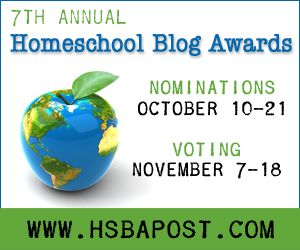by Katie Kubesh
I know I’m supposed to be on holiday, but I’m catching up on email backlog and just discovered this one… I don’t know why I didn’t notice this article in my mail when it came through in September just before the boys went on their horse camp. It would have made a good unit study for the boys in preparation for their camp… I will definitely have to keep it in mind before they go on the next one.
 If you or your children have ever had the privilege of visiting a farm and riding a horse, you probably discovered how easy it is to fall in love with these magnificent creatures! Those dark eyes, soft coat, and long, flowing mane are hard to resist.
If you or your children have ever had the privilege of visiting a farm and riding a horse, you probably discovered how easy it is to fall in love with these magnificent creatures! Those dark eyes, soft coat, and long, flowing mane are hard to resist.
Did you know that horses are measured in units of hand length? A “hand” is equal to about 4 inches, and the average horse stands between 15 and 17 hands high. Speaking of hands, what better way to learn about these beautiful animals than with hands-on activities that are assembled together to create a horse lapbook!
You may already have heard that student learning improves when lessons incorporate hands-on activities. It’s true! Therefore, a lapbook would be a great way to teach children about horses and incorporate hands-on activities. Although creating a lapbook about horses may seem as daunting a task as riding the biggest, fastest horse on the farm, with a little research and equipped with some basic home office supplies, your student can learn about the horse and complete an attractive lapbook displaying everything he or she has learned.
Your student will need file folders, paper in a variety of colours, crayons, pencils, markers, or other writing tools. You can find many reproducible templates for mini books, pocket cards, and other booklets and graphics online. You can also make your own mini books by folding paper in various ways. Other items to use in your horse lapbook include clipart, stickers, scrapbook paper, die cuts, colouring pages, games, puzzles, drawings, and photos.
Key concepts will vary depending on the age/skill level of your student and on what you decide you want to learn about horses. Here are some ideas to choose from:
Scientific Classification
What is the horse’s classification? What other animals belong to the same family? Horses, donkeys, and zebras look alike because they are all in the same family. Encourage your student to compare these three types of animals, using a mini booklet or Venn diagram.
Anatomy
Find a picture of a horse and have your child label the anatomy. Important features include the back, belly, dock, eyes, fetlock (ankle), forelock, hock, hoof, knee, mane, muzzle, neck, nostril, shank, tail, and withers. Find out about the different facial markings and leg markings on horse breeds, and encourage your child to draw markings on a picture of a horse’s face and/or legs. Markings might include star, snip, stripe, or blaze.
When studying anatomy, this would be a great time to explore the purpose of horseshoes! Why do horses wear shoes and how are they put on? Have your child record his or her answers on a horseshoe-shaped booklet.
Diet
Horses need plenty of food and water. What do horses eat? Are horses considered omnivores, carnivores, or herbivores? Visit a local feed store to learn about the different types of feed available. It is important to feed domestic horses properly, including lots of good quality hay. Visit a local horse farm and ask the owner to explain the dangers of feeding a horse bad hay. Ask him how to tell the difference between good and bad hay.
Life Cycle
How long do horses live? What are some of the stages of a horse’s life cycle? On a yearly calendar, have your child record or count the gestation period for a horse (11 months).
Horse Senses
How do horses use their senses? Horses rely on all five senses, but four are especially sensitive. Encourage your child to learn how horses rely on their senses of hearing, sight, touch, and smell.
Horse Gaits
What are the different types of gaits? Pretend you are horses and try demonstrating each of the different gaits: walk, trot, canter, gallop.
Size and Age
How are horses measured? Compare the size of different breeds of horses and/or compare the size of horses to other animals in the Equidae family. Find out what the smallest breed of horse is and the largest. How is a horse’s age determined? Suggestion: Have your child write his or her answer to this question on a mini book with horse teeth on it!
Body Language
If you ever wonder what a horse is feeling, look at its face and ears! A horse’s body language is a good indicator of how the horse is feeling. Explore the different ways that horses communicate with each other and with humans. If possible, have your child observe a horse and record in a journal what he or she notices. Are the horse’s ears forward and flickering? Are the ears pinned back? Are its nostrils flared? Is one ear forward and one ear back? What do all these things mean?
Horse Breeds
What are the different breeds of horses? Have your child pick one (or more) of his favourites and write a brief report about that breed, including the average height and weight of the breed, common colour, where the breed originated, distinctive markings, and other interesting facts.
How Horses Are Useful
Horses are able to follow basic commands and have been very useful to man throughout history. Research at least five ways that horses have been useful to man. Visit a racetrack, recreational facility, or a farm where horses are used as part of the work team. Explore the etymology of the term horsepower to learn when, where, and how the term was first coined.
How to Care for a Horse
What do horses need to survive? Visit a local farm or veterinarian’s office to find out. Or do some research online and at the library to identify the basic needs of horses, including food, shelter, and veterinary care. Find out which basic pieces of equipment are needed to ride horses.
Identification Terms
A horse is a horse, but during your research you may come across a variety of terms that are used to identify a horse, depending on its age and gender. Encourage your student to become familiar with different terms used to identify horses, including these: foal, colt, stallion, gelding, filly, mare, dam, and sire.
Famous Horses
From racehorses to cartoon characters, horses have made a name for themselves throughout history. What are some of your favourite horse characters? Is your favourite horse a real horse or a fictional character? Famous horses your student may want to investigate include Black Beauty, Mr. Ed, Barbaro, Citation, Seabiscuit, Silver, and Trigger. Encourage your child to create his or her own imaginary horse character! Write a story about a horse, or create finger puppets to act out a horse-themed play.
Vocabulary Terms
As with any study, vocabulary is important! Find the definitions of relevant or new words as you go through the study. Some vocabulary terms you may want to include in your horse lapbook include these: breed, canter, colt, farrier, filly, foal, gait, gallop, gelding, herbivore, mare, reins, sire, stallion, thoroughbred, trot, walk.
Related Reading
Don’t forget to read some fun books about horses! Some horse-related books include these: Mrs. Mack by Patricia Polacco, H Is for Horse: An Equestrian Alphabet by Mike Ulmer, I Wonder Why Horses Wear Shoes by Jacki Gaff, The Kingfisher Illustrated Horse & Pony Encyclopedia by Sandy Ransford, and Horse Sense by Beth Gruber.
Completing Your Horse Lapbook
To complete your horse lapbook, simply fold the file folder(s) shutter style and attach the mini booklets and other graphics to the lapbook. Your completed horse lapbook has become a portfolio of your student’s study of the horse! Your horse lapbook is easy to store and will fit into a file cabinet, file folder, or magazine holder with ease. Pull the horse lapbook out again and again to review and reminisce about the great things you and your child learned about the magnificent horse!
Katie Kubesh is co-owner and writer/researcher for In the Hands of a Child. Recognizing that hands-on projects are essential to the learning experience, In the Hands of a Child has created project packs that go beyond the hands-on aspect. They have taken the preparation time out of the parent/teacher job description with complete, ready-to-assemble, lapbook-style units that are available in ebook, printed book, and CD formats. Please visit their website at http://www.handsofachild.com/.
Copyright, 2011. Used with permission. All rights reserved by author. Originally appeared in The Old Schoolhouse® Magazine, Summer 2011.
Visit The Old Schoolhouse® at www.TheHomeschoolMagazine.com to view a full-length sample copy of the magazine especially for homeschoolers. Click the graphic of the moving computer monitor on the left. Email the Publisher at Publisher@TheHomeschoolMagazine.com.




![image_thumb[1] image_thumb[1]](https://blogger.googleusercontent.com/img/b/R29vZ2xl/AVvXsEhOeTxQwDZeIkDC7D1Z8WmqKUi21QLI-VMNq6Wz7pGuUHJ2KWN35sNfasBL_bdYZIcAz6gMxW9Z_Bnl1sOPYaPHcF9lG46Niscc1n7Z_Gq0AH1Adr0RSN7g-32-yqmUQzztTbC3B2B9ltc/?imgmax=800)





















































